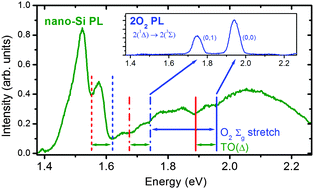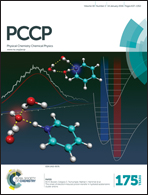Observation of oxygen dimers via energy transfer from silicon nanoparticles†
Abstract
Energy transfer from photo-excited excitons confined in silicon nanoparticles to oxygen dimers adsorbed on the nanoparticle surfaces is studied as a function of temperature and magnetic field. Quenching features in the nanoparticle photoluminescence spectrum arise from energy transfer to the oxygen dimers with and without the emission of Si TO(Δ) phonons and, also, with and without the vibrational excitation of the dimers. The dependence of the quenching on magnetic field shows that energy transfer is fast when a dimer is present, allowing an estimate of the proportion of the nanoparticles with adsorbed dimers.


 Please wait while we load your content...
Please wait while we load your content...